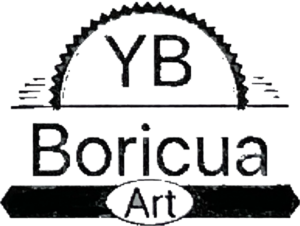The word zine (pronounced ZEEN) is a truncation of “magazine.” A zine is a small-circulation, self-published, easily reproduced, printed form of self expression. Its a short magazine or booklet that can include text and / or images.
A zine can be almost any format: folded, stapled, taped, glued, sewn, stacked, or bound, and usually made with paper. While rooted in fan culture, zines today encompass a wide range of creative expressions and topics. They are typically made in limited quantities (typically less than 1,000 copies) and distributed for a small fee, for free, or traded for other zines, goods, or services.
A zine, short for fanzine, which originated in the science fiction fandom community. This DIY, independent medium for expressing creativity and sharing ideas is often centered around a specific theme or interest. They can encompass a wide range of content, including text, images, artwork, and found objects.
Brief history of zine
Self-published booklets and pamphlets are not a new idea. People with independent ideas have been sharing their words and opinions since there were printing presses. Zines have been printed for centuries, some trace the concept back to early times
1517 like Martin Luther’s 95 Theses
1775 with pamphlets like Thomas Paine’s Common Sense and “little magazines” dedicated to Black thought like Fire during the Harlem Renaissance.
1930 “Zines” received the name for the first time in the United States (in Chicago). These science fiction zines circulated among fans to build community in a pre-digital age.
1970s and 80s, zines gained a new look and feel with the punk underground movement presenting alternative-culture ideas and information affordably.
1980s – Photocopiers and risographs are more readily available to artists. These black-and-white, xerox-printed, stapled-together publications brought music, political, and skate news from the streets,
1990s-2000s – Rise of the internet and desktop publishing e-zines or Webzines.
2000s-2010s – Rise of zine fests, online zines, and zine artist collectives; libraries collect zines; more bookstores begin selling zines; zines are sold, traded, or given as gifts; diverse communities embrace zine-making (POC Zine Project, QZAP – Queer Zine Archive Project, Latinx zines – both online and physical); ZineWiki is established
Throughout time, zines were usually started by people on the fringe that couldn’t get their ideas published in traditional magazines, so they started their own by creating content in a booklet of ideas that could be distributed at events. Today, zines are more diverse than ever though they continue to act as a powerful medium for sharing the experiences of historically marginalized communities and for promoting political activism. The content of a zine can touch on any topic: from music and visual art to sexuality and environmentalism, to politics, literary, humor, criticism, fashion, or personal memoir. They often focused on niche interests and created with a DIY, independent spirit usually reproduced via photocopier.
Difference between a zine and a magazine
Traditional magazines are formal publishing that have a specific focus, publishing rules, and several hurdles for writers. On the other hand a zine is an alternative “rebellious” publication for people who want to distribute their ideas without the limitations of traditional magazines. As a zine creator, you determine the layout, images, and content. You can take your zine in any direction you want. You are the writer, designer, staff, and owner. A zine offers an independent platform where your artistic thoughts and designs can be freely published. You can take the zine in any direction you want, and you determine every topic. The zine represents independent and critical thinking and is a vehicle through which artists express alternative ideas.
The usefulness of zines as historical documents is now being recognized. Many universities have their own zine collections and there are also numerous independent zine libraries both in America and around the world. It’s easier than ever to learn about zines first-hand.
Zines are the most tangible way of expressing yourself in a world full of cookie-cutter media. There are so many reasons why you could and should make a zine. Here are just a few:
- Provide a platform for individuals to share their unique perspectives and creative visions.
- Easy and inexpensive to produce, making them accessible to a wide range of creators.
- Are DIY creations that emphasize a hands-on approach, with creators often handling all aspects of production, from writing and design to printing and distribution.
- Connect with others
- Create a collection
- Inform people about a topic
- Process a difficult time
- Protest harm happening in your community
- Record an experience
- Share your manifesto
- Share your creativity: songs, poetry, artwork,
- Support your art practice
- Teach a process
- Tell your story
What can you find in a zine?
- Art
- Biography
- Collaborative Work
- Collage format
- Collage Art
- Comic Styles – Mini Comics
- Drawings
- Edgy Styles
- Edgy Topics
- 80s-90s “old school” cut-and-paste aesthetic
- Essays and Commentary
- Handmade / Homemade Feel
- Instructions
- Information
- Lists
- Manifestos
- Marginalized Voices
- Notebook Look
- no images at all
- No text at all
- Opinions
- Paintings
- Personal Narratives
- Photocopier Look
- Photographs
- Poetry
- Points of View
- Political Topics
- Short Stories
- Text
- Word Art
- Anything really!
How to make a zine:
Anyone can be a zinester (“someone who creates a zine”), and most people make zines for the love of creating rather than for seeking a profit. Zine culture is alive and thriving. Zinesters often share their work at local zine fests. These events showcase the wide variety of zines and allow creators to meet fellow zinesters. Before there were blogs, there were zines. And before there were print-on-demand books, there were zines. Zine printing and publishing are the original way for ordinary people to reproduce publications and get their ideas out into the world with the assistance of some cheap technology, like the copy machine or printer.
- Choose a theme: Decide on a subject matter that interests you.
- Gather materials and or create content: Collect paper, images, text, write, draw, collage, or assemble any content and materials you want to include.
- Design your layout: Arrange your content on the pages.
- Print or photocopy: Reproduce your zine.
- Assemble and distribute: Cut, fold, or staple, then share your zine with others.
A zine may include anything that you may wish to express! The idea behind a zine is that you express your intentions in some “pamphlet-esque” or “book-like” form, replicate that creation, and then share!
I enjoyed the journey of making a zine. It was even more rewarding sharing a little joy when random strangers received the zine. I invite you to make a zine and share it with your friends and family.



